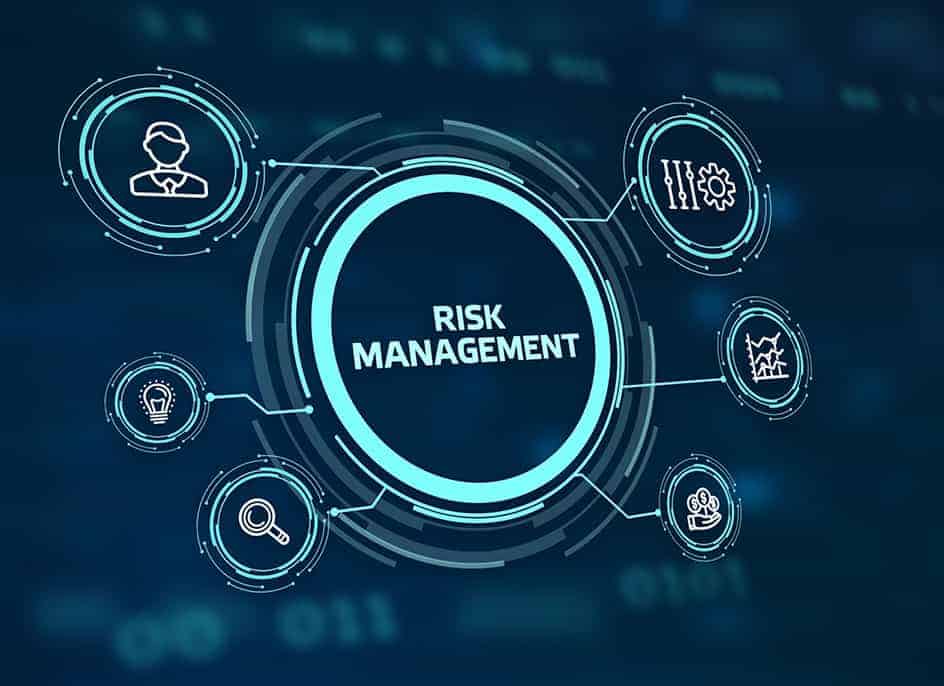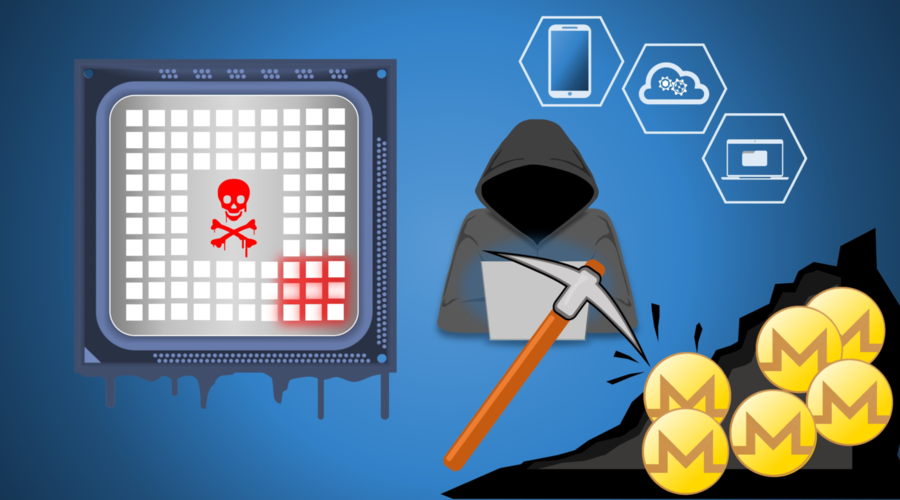Introduction
Cryptocurrency mining has gained popularity in recent years, but along with its rise, so has the prevalence of mining malware. This article explores the workings of cryptocurrency mining malware and provides preventive measures to protect against such threats.
Understanding Cryptocurrency Mining Malware
Cryptocurrency mining malware, also known as cryptojacking, refers to the unauthorized use of computing resources to mine cryptocurrencies. It involves infecting devices with malicious software that secretly utilizes their processing power for mining operations.
- Types of Mining Malware: Discussing the different forms of mining malware, including browser-based miners, malicious apps, and botnets.
- Signs of Infection: Highlighting the indicators of a mining malware infection, such as increased CPU usage, system slowdowns, and unexpected battery drain on mobile devices.
How Cryptocurrency Mining Malware Works
Explaining the mechanisms behind cryptocurrency mining malware and its impact on infected devices. Additional points to consider include:
- Propagation Methods: Discussing the common ways mining malware spreads, such as malicious email attachments, drive-by downloads, and compromised websites.
- Mining Algorithms: Exploring the mining algorithms used by malware and how they contribute to the mining process of cryptocurrencies.
Risks and Consequences of Mining Malware

Highlighting the risks and consequences associated with cryptocurrency mining malware infections. Additional points to consider include:
- Performance Degradation: Discussing how mining malware can significantly impact device performance, leading to sluggishness, overheating, and increased energy consumption.
- Financial Implications: Exploring the financial consequences of mining malware, such as increased electricity costs, potential hardware damage, and loss of productivity.
Preventive Measures and Best Practices
Providing preventive measures and best practices to safeguard against cryptocurrency mining malware. Additional points to consider include:
- Keep Software Updated: Emphasizing the importance of regularly updating operating systems, applications, and security software to patch vulnerabilities that mining malware exploits.
- Use Antimalware Solutions: Recommending the use of reputable antimalware solutions that can detect and remove mining malware from infected devices.
- Browser Security Settings: Discussing the benefits of adjusting browser security settings to block malicious scripts and unauthorized mining activities.
- User Education: Stressing the need to educate users about the risks of mining malware and the importance of exercising caution while browsing the internet and downloading files.
Evolving Techniques and Variants
Examining the evolving techniques and variants of cryptocurrency mining malware to adapt to changing security measures. Additional points to consider include:
- Fileless Malware: Discussing the emergence of fileless mining malware that operates in memory, making it harder to detect and remove.
- Polymorphic Malware: Exploring polymorphic mining malware that constantly changes its code structure to evade detection by antivirus software.
Targeted Industries and Vulnerabilities
Analyzing the industries that are particularly vulnerable to cryptocurrency mining malware and the specific vulnerabilities exploited by attackers. Additional points to consider include:
- Education and Research Institutions: Discussing the high computing power available in these institutions, making them attractive targets for mining malware.
- Internet of Things (IoT): Exploring how vulnerable IoT devices, such as routers and smart devices, can be compromised and used for mining operations.
Malvertising and Drive-by Mining
Exploring the use of malvertising campaigns and drive-by mining techniques to distribute mining malware. Additional points to consider include:
- Malicious Advertising Networks: Discussing how cybercriminals use legitimate advertising networks to spread mining malware through malicious ads.
- Compromised Websites: Analyzing how attackers compromise legitimate websites and inject mining malware scripts into their webpages to mine cryptocurrencies.
Impact on Individuals and Organizations
Examining the impact of cryptocurrency mining malware on individuals and organizations, including financial losses and potential legal consequences. Additional points to consider include:
- Cryptojacking in the Workplace: Discussing the productivity and financial implications of mining malware infections on corporate networks and the steps organizations can take to protect their assets.
- Legal and Ethical Concerns: Exploring the legal ramifications and ethical considerations surrounding unauthorized use of computing resources for cryptocurrency mining.
Detection and Removal Techniques
Exploring the techniques and tools available for detecting and removing cryptocurrency mining malware. Additional points to consider include:
- Behavioral Analysis: Discussing how behavioral analysis can be used to identify the suspicious activities and patterns associated with mining malware.
- Network Monitoring: Exploring the importance of network monitoring tools in detecting unauthorized mining activities and abnormal network traffic.
Mitigation Strategies for Organizations
Providing mitigation strategies for organizations to protect their networks and devices from cryptocurrency mining malware. Additional points to consider include:
- Network Segmentation: Discussing the benefits of network segmentation to isolate critical systems and prevent the spread of mining malware.
- Employee Training and Awareness: Emphasizing the importance of educating employees about the risks of mining malware and best practices for maintaining a secure computing environment.
Cryptocurrency Mining Malware on Mobile Devices
Examining the specific challenges and preventive measures for detecting and preventing mining malware on mobile devices. Additional points to consider include:
- Mobile Security Apps: Recommending the use of reputable mobile security apps that can detect and remove mining malware from smartphones and tablets.
- App Store Security: Discussing the importance of app store security measures to prevent the distribution of malicious mining apps.
Collaborative Efforts and Industry Partnerships
Highlighting the collaborative efforts and industry partnerships aimed at combating cryptocurrency mining malware. Additional points to consider include:
- Threat Intelligence Sharing: Discussing the benefits of sharing threat intelligence among security researchers, organizations, and antivirus vendors to enhance detection capabilities.
- Cybersecurity Standards and Best Practices: Exploring the development and implementation of cybersecurity standards and best practices specific to mining malware prevention.
Evolving Techniques and Variants
Cryptocurrency mining malware continuously evolves to evade detection and maximize its effectiveness. One of the emerging techniques is the use of fileless malware, which operates entirely in memory without leaving traces on the disk. By leveraging scripting languages or exploiting legitimate system tools, fileless mining malware can bypass traditional antivirus software and remain undetected. Polymorphic malware is another variant that constantly modifies its code structure, making it difficult to detect using signature-based detection methods. These evolving techniques highlight the need for advanced threat detection systems that can analyze behavior and detect anomalies in real-time.
Targeted Industries and Vulnerabilities
Certain industries are more susceptible to cryptocurrency mining malware due to their high computing power and specific vulnerabilities. Education and research institutions, for example, often possess powerful computing infrastructure that can be targeted by mining malware. Additionally, the Internet of Things (IoT) ecosystem presents unique vulnerabilities as many IoT devices have limited security measures and are connected to networks with valuable computing resources. Attackers may exploit these vulnerabilities to compromise IoT devices and utilize their computing power for mining operations. It is crucial for organizations in these industries to implement robust security measures and regularly update their systems to prevent unauthorized mining activities.
Malvertising and Drive-by Mining
Malvertising campaigns and drive-by mining techniques have become popular methods for distributing mining malware. Malicious advertising networks are used to deliver malicious ads that contain mining scripts. These ads can be displayed on legitimate websites, and unsuspecting users who click on them may unknowingly initiate mining operations on their devices. Compromised websites are also used to inject mining scripts into their webpages, leveraging the trust of visitors to execute mining operations without their consent. Users can protect themselves by using ad-blockers, keeping their browsers and security software up to date, and exercising caution when visiting unfamiliar websites.
Impact on Individuals and Organizations
The impact of cryptocurrency mining malware extends beyond the individual victims. In organizations, mining malware infections can lead to significant financial losses and operational disruptions. The excessive consumption of computing resources by mining operations can slow down critical systems, reduce productivity, and increase energy costs. Furthermore, the legal implications of unauthorized use of computing resources for mining can be severe. Organizations found to have allowed mining malware to operate on their networks may face legal consequences and reputational damage. It is essential for organizations to implement robust security measures, conduct regular security audits, and educate employees about the risks and consequences of mining malware infections.
Detection and Response Strategies
Effective detection and response strategies are crucial in combating cryptocurrency mining malware. Implementing intrusion detection systems (IDS) and intrusion prevention systems (IPS) can help identify and block mining malware activity on the network. These systems monitor network traffic, analyze patterns, and detect suspicious behavior associated with mining operations. Upon detection, organizations can swiftly respond by isolating the affected systems, removing the malware, and implementing security patches to prevent future infections. Additionally, continuous monitoring and regular security assessments are essential to stay vigilant against evolving mining malware threats.
Legal and Regulatory Landscape
The legal and regulatory landscape surrounding cryptocurrency mining malware is continuously evolving. Governments and regulatory bodies are increasingly recognizing the threat posed by mining malware and taking steps to address it. Many jurisdictions have introduced laws and regulations that classify unauthorized mining activities as illegal and subject to penalties. Organizations are obligated to comply with data protection and privacy laws when handling mining malware incidents that involve sensitive information. Staying informed about the legal and regulatory requirements specific to cryptocurrency mining malware is crucial to ensure compliance and mitigate potential legal risks.
Security by Design Approach
Adopting a security by design approach is paramount in preventing and mitigating the risks associated with cryptocurrency mining malware. This approach involves integrating security measures and considerations into the design and development of hardware, software, and systems. Implementing strong access controls, utilizing secure coding practices, conducting thorough vulnerability assessments, and regularly updating and patching systems can significantly reduce the attack surface and minimize the risk of mining malware infections. By prioritizing security from the outset, organizations can proactively protect their assets and mitigate the potential impact of mining malware.
Ethical Mining and Responsible Cryptocurrency Usage
In response to the rise of mining malware, there has been a growing emphasis on ethical mining and responsible cryptocurrency usage. Ethical mining practices involve obtaining consent from users before utilizing their computing resources for mining operations. Some initiatives promote opt-in mining models where users voluntarily contribute their computing power in exchange for rewards. Responsible cryptocurrency usage entails conducting due diligence on mining operations and supporting projects that prioritize transparency, environmental sustainability, and compliance with regulations. By promoting ethical mining and responsible cryptocurrency practices, the industry can mitigate the negative impact of mining malware and foster a more secure and sustainable ecosystem.
By exploring these additional subtopics, we can provide a more comprehensive understanding of detection and response strategies, the legal and regulatory landscape, security by design approach, and ethical mining and responsible cryptocurrency usage in the context of cryptocurrency mining malware.
Conclusion
Cryptocurrency mining malware poses a significant threat to individuals and organizations, utilizing computing resources without consent. By understanding how mining malware operates and implementing preventive measures, users can protect their devices and mitigate the risks associated with this growing security concern.

